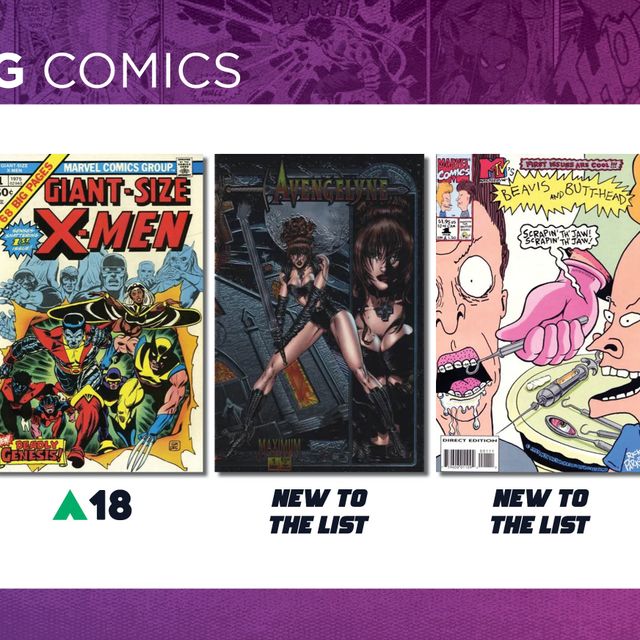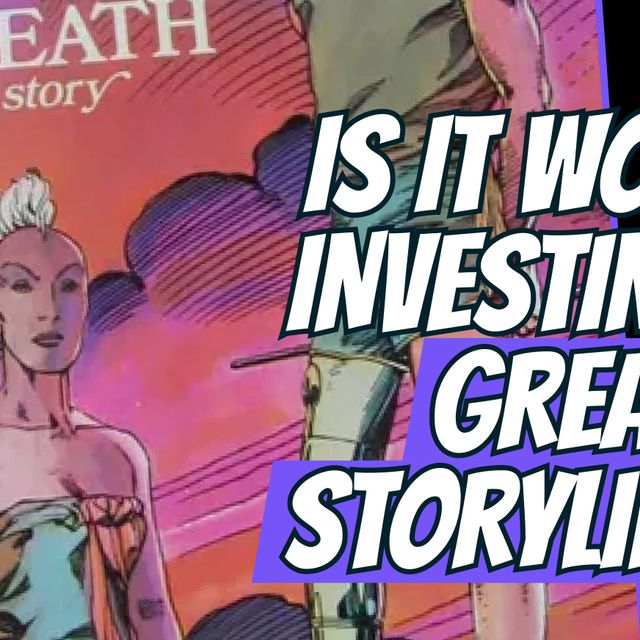
Blogging for the “GoCollect.com” website I’ve noticed something peculiar about the collecting community. While generally an accepting and open bunch (and I’m focusing here on collectors of comic books), there are some within the community who have very strong opinions about how to collect, which books to buy, in what condition, etc.
John Stuart Mill once wrote that without the liberty to fully express ourselves, everybody in society loses. In other words: diversity of opinion and self-expression is actually a great thing. In the same spirit as Mill, I would say that everyone should be free to collect what they want in whatever way they see fit.
Ignoring obviously unacceptable behavior, such as theft, fraud or violence used against someone else to obtain a collectible - which is always unacceptable and something that I think we, as collectors, can all agree on - I would hold it that there is no ‘right’ way to collect.
If my eight year old nephew likes to collect comics only to tear off their covers and paste them into a collage, then that’s how he collects (and he can have a lot of my 1990s comics to help him out). Of course, he may, and most likely will, grow out of that practice. If he doesn’t, it’s still his choice and he’ll do it because it is fun and he enjoys using the books that way.
For most collectors however, and these types - it seems - have always existed, the act of collecting satisfies some deep set impulse. Some people like having and preserving items, including objects the value of which is highly subjective. These ‘collector types’ have probably always existed. Therefore, more important than trying to establish how or why to collect, I would argue, we should instead examine what makes certain items collectible in the first place.
More interesting still are the conditions that make certain groups of people not only want to own and collect but willing to pay top dollar for owning and having a so-called ‘valued collectible’ in the first place.
What conditions have to be in place to make something both collectible and valuable? More to the point, what makes comics valuable?
To place this into sharper perspective, what makes

Avengers #1 a highly valuable comic book, and Superman Family 181 (pictured at the top of this post) a dollar bin book?
Judging by what most people think, it’s due to the fact that Avengers #1 is older (published in 1963) and a first issue, while Superman Family #181 (from 1974) is more recent and easily obtainable in good condition.
Then again, eleven years isn’t all that big a deal in terms of time and, of course, there are comics from 1974 (Hulk #181, for example) that are very widely available and yet quite valuable. Furthermore, there are comics a lot older than Avengers #1, e.g. Archie Comics #98 - from 1959 - worth a lot less.
At this point, we could focus on the fact that Avengers #1 is much scarcer in high grade.
Older first issues that are scarce seem to be more valuable. Yet, once again, there are cases of even older comics, and scarcer, that are simply not worth all that much.

Popular Comics #1 from Dell (which, if you've never heard of it is the first comic book appearance of Dick Tracy, Little Orphan Annie, Terry and the Pirates, Gasoline Alley; and the very first appearance of Don Winslow) was published in February of 1936. There are a grand total of 12 of these on the CGC census. A 4.0 sold on Heritage auction in February of 2008 for $1,673.00. Avengers #1, with a total of 3,660 certified copies (300 times as many) sells today for $2,400.00 in 4.0 (although at the same time period of Feb 2008 sold on Heritage for only $482.78). Yet, if age and scarcity are the key factors these two comics should be worlds apart, and Avengers #1 shouldn't stand a fighting chance.
Regarding first issue equals value claim, I could list dozens and dozens of number 1 issues worth very little even to collectors. Want to buy my Shaman’s Tears #1 in 9.8 for $500.00? How about my perfectly preserved copy of Silverblade #1 for $1000.00. I didn’t think so…
So it’s not just age or being first. No, there are more nuanced factors at work. At this point we should turn our attention to desirability. What makes some comics, like Avengers #1, Amazing Fantasy #15, Hulk #181, desirable?
First appearances of popular characters may be a good start: but, of course, in the case of Avengers #1, none of the characters appearing therein do so for the first time…
In my next post, I’ll examine the difference between a fad collectible versus one that’s desirable for long term investment.


